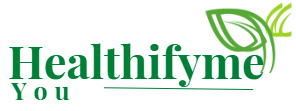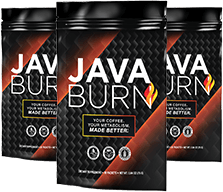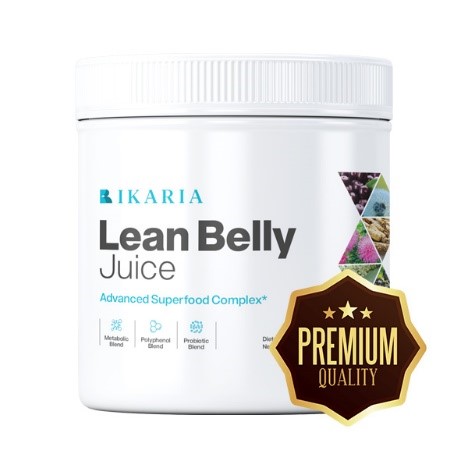After a deep or vigorous yoga class, feeling some soreness is completely regular. You would possibly really feel actually sore when you tried new poses, held postures longer, or challenged your self previous your present fitness stage. This soreness, usually known as delayed onset muscle soreness (DOMS), is your body’s pure therapeutic and restoration course of.[1] You can decrease the quantity and length of soreness, ache, and stiffness by following a number of sensible tips to get well safely and rapidly.
Disclosure: This submit might comprise affiliate hyperlinks. If a purchase order is made via these hyperlinks, we might earn a fee at no additional value to you. Your sort help helps us create extra conscious articles!
How to Tell Soreness from Injury
Muscle Soreness: DOMS normally arrives 12–48 hours after apply. It looks like a boring ache or stiffness, improves with mild motion, and fades over a couple of days. The discomfort stems from tiny tears in muscle fibers as a result of muscle contraction. While this creates an inflammatory response to restore the muscle tissue, it’s a pure strategy of how your muscle groups get stronger.[3]
Injury: A muscle or joint damage normally presents as a pointy ache throughout or instantly after apply. You will usually have swelling, bruising, localized ache that worsens with motion, or loss of vary of movement. Stop training when you suspect an damage. Follow these pointers on methods to heal an damage or seek the advice of a healthcare skilled.
8 Ways to Recover From Sore Muscles From Yoga
Feeling your muscle groups tight and sore after a yoga apply will be very uncomfortable and a discouragement to get again in your yoga mat. Fortunately there are a number of straightforward and efficient methods to ease the ache and probably forestall it from getting worse. Try a number of of the next tips when you find yourself experiencing soreness after yoga.
1. Gentle Movement
Why: Gentle and gradual motion will increase circulation and reduces stiffness.
How to do it:
- Take a break from any high-intensity yoga lessons. Choose a restorative, yin, or mild yoga class for the subsequent day or so.
- Walk for 20–half-hour at a straightforward tempo.
- Whatever motion you select, take it gradual and keep away from pushing into sharp sensations.
2. Hydrate and Nourish
Why: Water helps muscle operate and nutrient transport, whereas food supplies building blocks for restore.[4]
What to eat:
- Protein: Protein is essential for repairing and rebuilding muscle fibers broken throughout yoga apply. Try to devour 20–30g inside an hour after a difficult yoga class. Protein powders are a fast and straightforward supply. Otherwise take into account lean meats, fish, eggs, dairy, tofu, tempeh, Greek yogurt, cottage cheese, edamame, and legumes.
- Carbohydrates: Replenish depleted glycogen ranges with entire grains, fruits, and starchy greens to supply the vitality wanted for restoration. Pro tip: pair carbohydrates with protein after yoga for optimum muscle restoration.
- Healthy fat: Consume some anti-inflammatory omega-3 healthy fat like avocados, nuts, seeds, and oily fish.
- Antioxidant-rich meals: Reduce oxidative stress by eating berries, leafy greens, and colourful greens.
How to Hydrate: Sip water all through the day, and hydrate after an intense yoga session to flush out metabolic waste, preserve nutrient transport, and scale back muscle cramping. Include electrolytes (coconut water or a naturally flavored electrolyte mix) when you sweat closely, or not too long ago practiced sizzling yoga.[4]
3. Rest and Sleep
Why: Muscle restore happens primarily throughout relaxation and deep sleep.
How to help it:
- Prioritize 7–9 hours of sleep.
- Schedule an early bedtime or a nap after an intense apply.
- Keep a constant sleep routine to take care of optimum restoration.
- Take an extended or additional shavasana or apply yoga nidra after a difficult exercise.
4. Massage and Foam Rolling
Why: Massage and mild pressure may also help loosen up muscle groups, increase blood circulate, and ease ache.
How to make use of:
- Foam curler: Roll slowly over giant muscle teams (quads, hamstrings, IT band, calves) with a firm foam roller to launch pressure and soreness. Pause on tender spots for 10–30 seconds, as you breathe deeply and loosen up.
- Massage ball: Use a small firm ball to focus on smaller areas like glutes, shoulders, and ft with mild pressure and gradual rolling.
- Self-Massage: Use lengthy, kneading strokes together with your palms on sore muscle groups.
- Massage Gun: A multi-head massage gun helps scale back soreness and tightness, particularly on giant muscle teams. Start on the bottom pace and preserve the system shifting; apply for 10–60 seconds per space. Use gentle pressure over delicate areas and improve depth provided that comfy. Do not apply it to bones, joints, or very tender spots. Avoid utilizing it on infected tissues, acute accidents, or the place you’ve got numbness or circulation issues.
- Professional therapeutic therapeutic massage: Deep tissue, Swedish, or sports activities massages can pace restoration by growing blood circulate, decreasing adhesions, and enhancing tissue elasticity
Caution: Avoid intense pressure on very sore or infected areas.
5. Hot and Cold Therapy
Why: Heat relaxes tight muscle groups; chilly reduces irritation and ache.
Guidelines:
- Heat: Adding warmth regionally or globally will increase blood circulate, enhances nutrient supply to muscle groups, reduces muscle stiffness, and promotes rest. For tight, sore and stiff muscle groups, take a heat bathe, use a heating pad, loosen up in a heat bathtub, or take a sauna.
- Cold: Use an ice pack: Apply ice packs to sore areas for 15-20 minutes after yoga, particularly if muscle groups really feel infected or very sore. Cold packs are efficient for acute ache, swelling, or sharp damage within the first 24–72 hours.
- Contrast remedy: Alternating between heat and chilly strongly stimulates circulation. Try 3–4 minutes heat, then 30–60 seconds chilly remedy. Repeat as much as 3 instances.
- Sauna with chilly plunge: Alternating periods between an infrared sauna and a chilly plunge strongly prompts the circulatory system—first dilating after which constricting blood vessels. This improves oxygen and nutrient provide, helps muscle groups heal sooner, lessens ache, and boosts basic health.
6. Epsom Salt Baths and Topical Remedies
Why: Warm baths with Epsom salts soothe muscle groups and increase rest.
How to make use of:
- Soak 15–half-hour in heat bathtub with 1–2 cups Epsom salt (magnesium sulfate). Hydrate and loosen up after your soak.
- Topical cures like arnica, menthol gels, or magnesium sprays can present fast soothing aid. Studies present menthol gels scale back muscle soreness extra successfully than exercise, with improved ache aid and fewer discomfort notion.[2] Arnica accommodates pure compounds believed to have anti-inflammatory and analgesic properties that scale back swelling and ache in muscle groups and joints after exercise. Magnesium might assist ease muscle tightness and enhance restoration by supporting muscle cell operate and decreasing irritation.[5] It is advisable to all the time check a small patch of pores and skin to examine for response.
 7. Mindful Breathing and Relaxation
7. Mindful Breathing and Relaxation
Why: Reducing stress lowers muscle pressure, which promotes muscle restore and restoration.
- Diaphragmatic respiration: Practice 5–10 minutes of gradual stomach breaths to calm the nervous system.
- Legs-up-the-wall (Viparita Karani): Practice 8–quarter-hour to scale back swelling, enhance lymphatic drainage, and encourage rest.
- Meditation: Use a brief guided meditation or progressive muscle rest to launch stress, fear, and pressure.
8. Supplements for Recovery
Note: Use dietary supplements to enhance a healthy balanced eating regimen. Consult your healthcare supplier earlier than beginning something new.
- Magnesium glycinate or citrate (200–400 mg/day): Magnesium is an essential muscle relaxant. It reduces muscle tightness, cramping, and soreness; helps vitality manufacturing and rest throughout and post-yoga.[6]
- Omega-3s (1,000–3,000 mg EPA+DHA/day): Use a fish oil or algae oil to scale back irritation from stress on joints throughout yoga.
- Curcumin (1,000 mg/day with piperine): This turmeric extract has anti-inflammatory, antioxidant and antibacterial results. Taking curcumin has been linked to much less muscle ache and decrease oxidative stress.[7]
- Tart cherry juice or extract (8–16 oz juice or 500–1,000 mg extract): Research reveals tart cherry juice may also help scale back muscle soreness, scale back irritation, and enhance muscle strength and efficiency.[7]
- Creatine Monohydrate (3-5g/day): This amino acid improves muscle strength and restoration by boosting muscle vitality ranges and decreasing irritation.[4]
Tips to Preventing Excessive Soreness
- Progress regularly: The body responds finest if you improve depth, length, and complexity slowly. Aim for growing the depth of your apply by 10% or much less to forestall extreme muscle restoration.
- Warm up completely: Always heat up completely earlier than a difficult class. A correct warm-up will increase circulation and reduces your danger of pressure.
- Cool down: A short cooldown helps your nervous system downshift into the “rest and renew” part to assist scale back next-day soreness.
- Balance your schedule: Alternate intense lessons with gentler ones and relaxation days. Thoughtful scheduling prevents overuse and helps constant progress.
- Cross-train: Add strength training, strolling, or swimming to develop resilient muscle groups and joints. Cross-training spreads the stress, improves endurance, and curbs cranky flareups.
- Focus on alignment: Lead with kind, not power. Correct kind distributes load evenly throughout your muscle groups and joints, decreasing undue pressure on any single space. When alignment is exact, effort turns into extra environment friendly and soreness decreases.
Final Notes
Soreness is a sign that your apply is difficult, and you might be working arduous and building strength. Even although muscle soreness is uncomfortable, see if you could find gratitude in your body’s skill to develop into stronger, extra resilient and adaptable. Most importantly, deal with your body’s soreness with respect and kindness.


















Discussion about this post